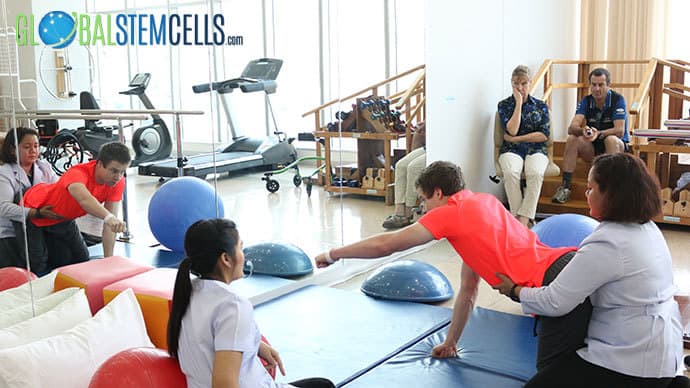Physical Therapy (PT) commonly known as physiotherapy is the medical practise of rehabilitating patients with musculoskeletal problems; to restore mobility and functionality, and to reduce pain. Occupational Therapy (OT) is an intervention that seeks to help its patients develop or recover skills necessary for daily activities. Occupational therapists, working collaboratively with the patients and their families, improvise everyday tasks, modify daily environment and provide support.
Recent studies are showing that PT and OT play a crucial role in muscle regeneration while maintaining general body wellness before, during and after Stem Cell Treatment. The reported studies focus on hematopoietic, endothelial and mesenchymal stem cells as they possess a very high capacity for differentiation.
Immunosuppressive treatment and prolonged bed rests, during Stem Cell Treatments, often cause profound loss of both physical functioning and psychological well-being to the patients. The physical losses relate to muscle atrophy, ataxia, hypoxia and loss of muscle strength while the psychological losses are associated with a diminished quality of life (QoL). PT interventions seek to recover, restore or develop muscle mass, muscle movement and muscle strength. OT related interventions aim at reversing the adverse psychological effects of the treatment on the patient’s QoL.
Research into Benefits of Physical and Occupational Therapies
In 1978, Barret and team observed that intensive physical exercise increased fourfold the amount of hematopoietic stem/progenitor cells (HSPC) in peripheral blood colony forming units (CFUs). This study suggested that exercise was integral in stem cell transplantation success as it the mobilisation of HSPC. Similar results have been obtained from our clinic where stem cell count in patients has greatly improved over 2 weeks in PT and OT.
Acute exercise increases the presence of endothelial progenitor cells (EPC), thus reducing the risk of cardiovascular diseases. A study by Ashara and colleagues in 1979, led to the discovery of cell populations with angiogenic capacity (CACs). CACs are cells that have the ability to develop into new cells after transplantation. While CACs from patients maybe dysfunctional, acute exercise greatly improves their capacity to angiogenesis and circulate.
Acute physical activity has been shown to restore MSC capacity for differentiating into the features of an osteoblast giving rise to bone formation in osteopenic rats. This new formation is detected by alkaline phosphatase (ALP) expression and mineralised nodules. A study of rats after 5 weeks of progressive treadmill running exercise shows that can increase the rate of bone formation and decrease marrow and suppress MSC adipogenesis.
Acute exercises that target multiple muscles often lead to cellular modelling; destruction and regrowth of a tissue causing an alteration in its structure. The quiescent Pax7+ satellite cell is responsible for regeneration after injury. Following strength training exercises, the quantity of Pax7+ satellite cells is increased into the patient’s skeletal muscles. There is also a determined increase in muscle fibre size after exercise.
Physical and Occupational Therapies in Stem Cell Treatment
On the effect of stem cells as well as Physical and Occupational Therapies, here are some of the things our doctors in Bangkok have noted:
“For chronic diseases, you do not see progress as fast as without PT and OT as with stem cells. Especially for Ataxia patients.”
“We can see the effect of stem cells when our patients drastically improve in PT and OT over the course of 2 weeks”
“We see chronic disease patients have more energy for exercise during the stem cell treatment package”
If you’d like to talk to us about your treatment options, please contact us and one of our caring Patient Representatives will get back to you as soon as possible.
H/T: Research Gate




 English
English